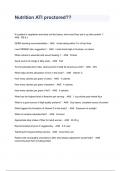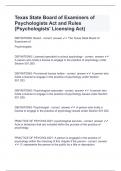Samenvatting
(RESIT) Summary FULL book (1-14) Organizational Structure, International Business, Rijksuniversiteit Groningen
- Instelling
- Rijksuniversiteit Groningen (RuG)
This is a summary of the full book, chapters 1 to 14, for the course Organizational Structure that is taught in the first year of the studies International Business at the Rijksuniversiteit Groningen. It is therefore suited for both partial exams and the resit. It contains a detailed description of...
[Meer zien]














